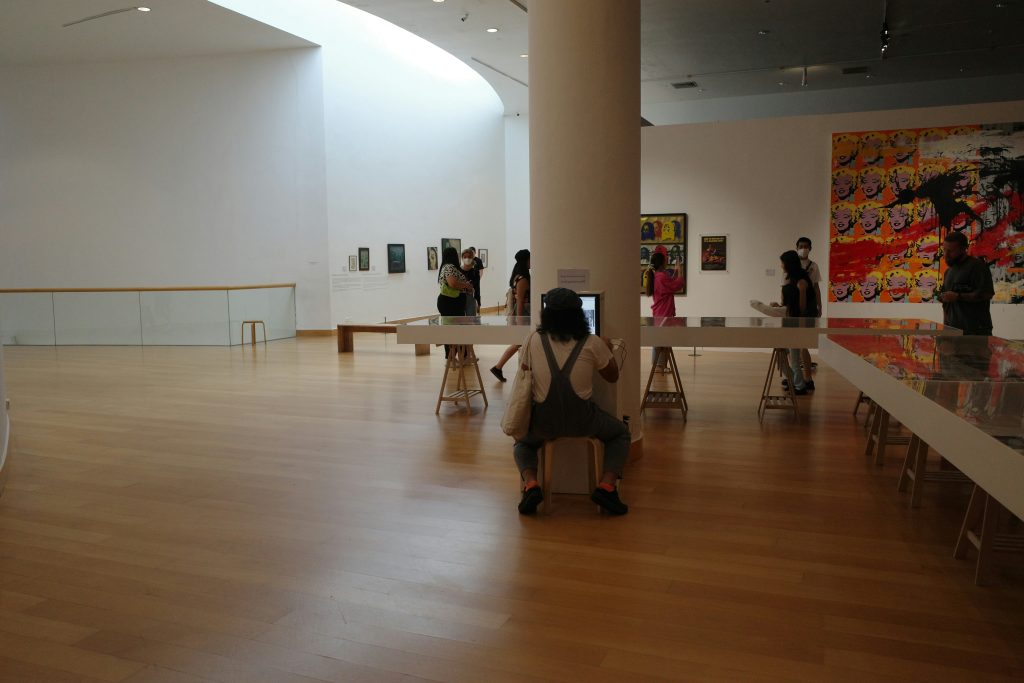
07 Jul How Interactive Art Installations Are Captivating Audiences in 2025
Introduction
Interactive art installations are immersive works designed to encourage audience participation rather than passive observation. These installations may respond to touch, movement, sound, or digital input, making viewers essential to the activation of the artwork. Over the last few decades, such experiences have gained prominence in contemporary art spaces worldwide, reflecting a broader trend toward more inclusive and participatory cultural experiences. The importance of audience engagement has grown significantly, as institutions aim to create deeper connections between visitors and artworks. This article explores the rise of interactive art, its execution, and its transformative role in shaping how we experience and interpret modern art.
The Evolution of Interactivity in Art
The roots of interactivity in art can be traced to early 20th-century experimental and performance art movements. Artists began challenging the traditional role of the viewer by incorporating elements that required physical or emotional involvement. As technology progressed, new forms of expression emerged. In the digital age, the introduction of real-time sensors, video, and computer programming gave rise to more sophisticated and reactive installations. This shift marked a transition from art being something to view at a distance, to something experienced through direct interaction—mirroring society’s growing desire for engagement and personalization in cultural and creative practices.
The Allure of Interactive Installations
Interactive installations offer a unique blend of emotional engagement and intellectual exploration. Viewers become part of the narrative, discovering new layers of meaning through their interactions. These experiences are often immersive, blending physical spaces with digital technologies to create environments that surround and involve the participant. This immersive quality broadens accessibility by allowing diverse audiences—including those less familiar with traditional fine art—to engage more intuitively. By encouraging personal interpretations and fostering hands-on participation, these installations promote meaningful encounters with art that resonate on an individual level.
Methods and Mediums Used in Interactive Installations
Modern interactive installations use a wide array of technologies and materials. Motion tracking, touch-sensitive surfaces, augmented reality (AR), virtual reality (VR), and artificial intelligence (AI) enable real-time responsiveness. Artists also incorporate sound, texture, and light to create multisensory experiences. The spatial layout of installations plays a vital role, as thoughtful environmental design helps guide audience movement and interaction. Some installations rely on simple, analog methods—like pulleys, mirrors, or kinetic elements—to encourage engagement without digital interfaces. These varied mediums allow artists to tailor the interaction style to their concept, creating accessible and immersive experiences across different platforms.
Curatorial Considerations and Challenges
Presenting interactive art in exhibition spaces comes with unique challenges. Curators must design experiences that are accessible to a wide range of audiences, including individuals with different physical and sensory abilities. They must also preserve the artist’s intent while allowing for open-ended audience responses. Interactive works often demand constant upkeep due to wear and tear from frequent use, and some may require technical staff to monitor or troubleshoot equipment. Effective crowd management is another priority, ensuring that installations remain safe and enjoyable for all participants. These factors require careful planning and adaptable infrastructure within exhibition environments.
The Role of Audience Participation in Shaping the Artwork
In many interactive installations, the final form or experience of the artwork is shaped by the audience’s participation. The artwork may change dynamically in response to viewer input—whether through physical interaction, sound, or digital feedback. This evolving nature means that the piece never has a single fixed state. Instead, it exists in a continuous cycle of transformation. This level of engagement emphasizes the idea of art as a living process, where meaning is co-created in real time between the artist’s framework and the participant’s actions, offering a more inclusive and layered understanding of artistic expression.
Institutional Support and Exhibition Spaces
Interactive art requires specific institutional support to thrive. Museums and galleries must invest in flexible spaces, appropriate technologies, and trained personnel to handle setup, maintenance, and visitor interaction. These institutions play a vital role in fostering innovation by supporting artists working with emerging technologies and new media. Staff training is essential to facilitate meaningful engagement and ensure that visitors understand how to interact with the installations. Educational programs, guided tours, and clear signage help demystify the technology and encourage deeper appreciation of the artwork.
Cultural and Educational Impact
Interactive installations have a significant impact on both cultural engagement and education. Their dynamic, participatory nature attracts diverse audiences and stimulates curiosity. For younger visitors in particular, these works provide an accessible introduction to contemporary and conceptual art. Interactive art also plays a growing role in STEAM education—where artistic exploration is combined with science, technology, engineering, and mathematics. Students interacting with these installations often gain insights into creative problem-solving, coding, design thinking, and digital communication, making these experiences valuable across both artistic and academic domains.
Ethical and Philosophical Dimensions
As audiences become active contributors to the artwork, new questions arise about authorship and the boundaries of creative control. In interactive art, the artist sets the parameters, but the meaning and experience of the work are completed by the viewer. This challenges traditional ideas of artistic authority and opens discussions about agency and intention. In digital installations, transparency is crucial when user data or behavior is tracked to influence the experience. Artists and institutions should clearly communicate when such technologies are used, ensuring respect for privacy and ethical interaction. These evolving relationships between artist, viewer, and technology reflect the increasingly collaborative nature of contemporary art.
Conclusion
Interactive art installations have redefined the boundaries of how we experience and interpret contemporary art. By shifting focus from observation to participation, they empower viewers to engage directly with ideas, materials, and technologies. As this art form continues to grow, it is reshaping the expectations of museum-goers and influencing the design of future exhibitions. With their potential to educate, inspire, and connect, interactive installations stand at the forefront of a new era in the arts—where creativity becomes a shared journey between artist and audience.
Key Takeaways
- Interactive art installations prioritize participation over passive viewing, inviting audiences to engage with artworks through touch, movement, sound, or digital interaction.
- This artistic evolution stems from 20th-century performance art and has expanded through technological advancements like sensors, VR, AR, and AI, creating more personalized and immersive experiences.
- Audience involvement enhances emotional and intellectual engagement, allowing individuals to co-create meaning and connect with the artwork on a personal level.
- Artists use diverse mediums, from high-tech tools to analog materials, to create multisensory, inclusive, and accessible installations that encourage hands-on exploration.
- Curating interactive art involves unique challenges, including accessibility, equipment maintenance, crowd management, and preserving artistic intent while enabling open-ended interaction.
- Audience participation often shapes the final outcome of the artwork, turning art into a dynamic, living process that evolves with each viewer’s input.
- Museums and galleries play a crucial role by providing infrastructure, technological support, staff training, and educational tools to support interactive exhibitions.
- Interactive installations support cultural and educational goals, particularly in STEAM education, by fostering creativity, curiosity, and cross-disciplinary learning.
- Ethical concerns arise around authorship, control, and data use, making transparency and respect for audience privacy vital in digital interactive works.
- Ultimately, interactive art is reshaping the art world, turning creativity into a shared, participatory experience that reflects contemporary values of collaboration, innovation, and inclusivity.
FAQs
What makes interactive art installations different from traditional art forms?
Interactive art installations invite viewer participation, making the audience an essential part of the artwork’s activation. Unlike traditional art that is passively observed, these installations respond to touch, movement, sound, or input, creating a dynamic and evolving experience shaped by individual engagement.
Why are interactive installations gaining popularity in 2025 exhibitions?
In 2025, audiences increasingly seek immersive and personalized cultural experiences. Interactive installations fulfill this demand by blending art, technology, and viewer input, fostering emotional connections, inclusivity, and a sense of discovery—making them a highlight in modern museum and gallery programming worldwide.
How do museums and galleries support interactive art installations?
Institutions invest in flexible spaces, digital infrastructure, and trained staff to host interactive artworks. They also develop educational resources and implement crowd management strategies to ensure accessibility, safety, and a deeper understanding of the installations, thereby enhancing audience engagement and preserving artistic intent.
Discover how digital art shows are transforming education by providing immersive, interactive learning environments that go beyond traditional classrooms—bridging the gap between creativity and technology in ways that inspire both students and educators alike.




